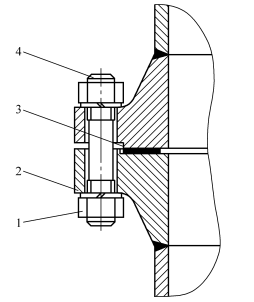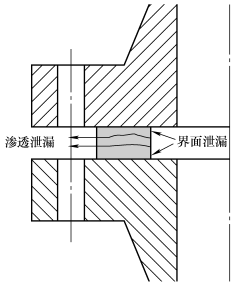- Gate valve
-
- DN1000 Extension stem double flange soft seal gate valveDIN F4 resilient seated gate valveDN450-1200 Resilient Seated Gate ValveDIN F5 resilient seated gate valveSocket connection soft seal gate valveUnderground cap soft seal gate valveBS5163 rising stem soft seal gate valveHard seal gate valveAPI slab Gate ValveStainless steel flange gate valveWafer knife gate valvePneumatic gate valveSoft seal gate valveExtension stem gate valveUL/FM fire protection groove ends gate valveRising stem forged steel gate valvecarbon steel gate valveStainless steel threaded gate valveDIN soft seal gate valveANSI soft sealing gate valve 200PSICast iron gate valveBS resilient seated gate valve
- Butterfly valve
-
- DN900 pneumatic triple eccentric hard seal butterfly valveD643H Triple Eccentric Butterfly ValveD343H Hard seal butterfly valveMulti standard EPDM seated butterfly valveSingle flange butterfly valveDN2000 Double eccentric butterfly valveFlange butterfly valveLug butterfly valveWafer butterfly valve with handleWorm gear operated butterfly valveWafer lined fluorine butterfly valveStainless steel wafer butterfly valveStainless steel flanged butterfly valveThree eccentric flange butterfly valvePneumatic flanged butterfly valvePneumatic wafer butterfly valveTriple eccentric butterfly valve wafer typeWafer butterfly valve ULC approvedInflatable seat butterfly valveHigh performance butterfly valveGrooved end butterfly valveElectric soft seal butterfly valveFlange fluorine lined butterfly valveHandle aluminum butterfly valveWorm Gear Aluminum Butterfly ValveFull PTFE lined butterfly valve wafer typeOne stem no-pin wafer butterfly valveMulti standard aluminum stem butterfly valveStainless Steel wafer Butterfly ValveAluminium handle operated lug butterfly valveLever Operated Flange Butterfly ValveButterfly valve stemButterfly valve discButterfly valve seat
- Ball valve
-
- DN1400 top-mounted eccentric semi-ball valveFlanged three-way ball valveFully welded ball valveNatural gas ball valveHigh platform flange ball valve1 PC ball valveFixed ball valvePTFE seat flanged ball valveMetal seat ball valveAPI 6D ball valve3 Piece ball valveFull Bore 3 way ball valve L-Port3 Way T-Port ball valve2PC Ball valve female thread stainless steel
- Globe Valve
-
- API Carbon Steel Globe ValveBellows Globe ValveStainless steel flange globe valveStainless steel thread S type globe valveStainless steel thread B type globe valveCast Steel Globe ValvePiston Globe ValveWCB Carbon Steel Globe Check Valveelectric motorized control stainless steel SS316 globe valveBrass Globe ValveCryogenic Globe valveHT200 Globe ValveThreaded Stainless Steel Globe ValveGG25 Globe ValveANSI API Cast Steel And Stainless Steel Globe valve
- Check valve
-
- Rubber seal check valveDN800 Slow closing check valveDN800 Rubber Disc Check ValveButterfly Buffering Check Valvecheck valve with counter weightSilent Check ValveWCB Swing check valveSwing Check ValveSingle Chip Check Valve H74WStainless Steel Wafer Check ValveSwing Start Check ValveFoot check valveAPI Swing Check ValveDIN Flange check valveSingle plate check valveLifting Check ValveBottom ValveHammer Diminish Noises Check ValveWafer Check ValveWafer dual plate check valve
- Control valve
-
- Static Balancing ValveCage Guided Sleeve Globe Control ValveDN1000 Piston Flow Regulating ValveDN1600 Electric Actuator Flow Regulating ValvePneumatic Flanged Butterfly ValvePneumatic Wafer Butterfly ValveAngle Seat ValvePneumatic gate valveElectric three-way control valveElectric sleeve control valve
- Water Meter
-
- Vertical Type Water MetersStainless steel threaded water meterPiston water meterPlastic water meterMore flow rotor dry water meterspiral vane flange water meterCI wotlman water meter with pulse outputLXCLG(R) Vertical removable element woltman cold (hot) water meterSingle flow rotor dry water meterPrepaid Token Water MeterElectromagnetic flowmeterRotary Piston Liquid Sealed Water MeterRotary Piston Liquid Sealed Water Meter
- Air valve
-
- Double ball exhaust valveDoubleair Air Valve SaudiDoubleair Air Valve Southeast AsiaDoubleair Air Valve South AmericaDouble Air ValveThreaded Air ValveSingle Air ValveTriple Functions Air ValveAutomatic Air Release ValveAutomatic release valveAutomatic exhaust valveComposite Exhaust Air ValveBrass exhaust valveDouble Ball Air Valve
- Pipe Repair & Coupling
-
- Flexible Multi-Function Pipe Coupling ZFJ-SSS Semi-Circle Pipe Repair Clamp SJW-HDuctile Iron Band Repair ClampStainless Steel Band Repair ClampDouble-Section Pipe Repair CouplingFolding Type Pipe RepairSingle-Section Multi-Function Pipe Coupling MF-SGear-Ring Type Multi-Function Pipe Coupling GR-SZBW Damping Corrugated Hose
- Dismantling Joint
-
- VSSJAFC(CC2F) Detachable Flange Transmission JointVSSJA-2(B2F) Double Flange Limited Expansion JointVSSJA-1(BF) Single Flange Limited Expansion JointVSSJA(AF) Flange Loose Expansion JointJGD-B Threaded Rubber JointZBW Damping Corrugated HoseKXT-S Flexible Dual-Spherical Rubber JointKXT Rubber Soft JointFlange Adaptor
Flange gasket sealing principle and leakage form
Basic Concepts of Gasket Sealing
Gasket sealing is the most important sealing structure for detachable joints such as pressure vessels, process equipment, power machines and connecting pipes in industrial installations. It usually consists of flanges, gaskets, connecting bolts and nuts, collectively referred to as flange sealing joints . The structural form of the flange sealing joint is shown in Figure 1.
Figure 1 Structural form of flange sealing joint
1-nut 2-flange 3-gasket 4-bolt
Gasket Sealing Mechanism
Leakage is the undesired phenomenon of a medium flowing from inside a confined space to the outside, or from outside into a confined space. The medium flows through the interface between the inner and outer spaces, that is, the sealing surface leaks. The root cause of leakage is that there is a gap in the contact surface, and the pressure difference and concentration difference on both sides of the contact surface are the driving force for leakage. Due to the influence of factors such as the form of the sealing surface and the machining accuracy, the sealing surface is not completely matched, that is, there will be a gap on the sealing surface, resulting in leakage. To reduce leakage, it is necessary to maximize the fitting of the contact surface, that is, to reduce the cross-sectional area of the leakage channel and increase the leakage resistance, making it greater than the leakage driving force. Applying a compressive load to the sealing surface can generate compressive stress and improve the contact degree of the sealing surface. When the stress increases enough to cause obvious plastic deformation of the surface, the gap of the sealing surface can be filled to block the leakage channel. The purpose of using the gasket is to use the characteristics of the gasket material to easily produce plastic deformation under the action of the compression load, so that it can fill the small unevenness of the flange sealing surface, so as to achieve sealing. In flanged sealing joints, the force of compressing the gasket deforms the gasket material, thereby filling the micro-gap between the flange sealing surfaces.
Leakage Forms of Gasket Sealed Connections
In flanged sealing joints, gaskets are the main sealing element. For non-metallic gaskets, the sealing of the connection is by tightening the bolts, resulting in a large compression stress on the contact surface between the flange and the gasket and inside the gasket. The micro-gap on the blue surface, on the other hand, reduces the porosity of the gasket material, that is, reduces the leakage channel of the sealed fluid. Since it is impossible to form an absolutely smooth ideal surface by any processing method, and it is impossible to achieve complete fitting between the sealing surfaces and complete blocking of the pores of the seal itself, there is always between the contacting sealing surfaces and the interior of the seal. with tiny gaps or channels. Thus, for gasket seals, leakage is always inevitable. When the medium passes through the bolt-flange connection with a certain pressure, there is always leakage at the sealing point. Analyzing this phenomenon, it can be found that leakage occurs in two forms, namely "interface leakage" and "osmotic leakage", as shown in Figure 2.
1. Insufficient compression stress of the interface leakage gasket, rough flange sealing surface, thermal deformation, mechanical deformation and vibration of the pipeline will cause leakage between the gasket and the flange sealing surface. In addition, under the action of temperature and pressure, the flange joint will deform and elongate the bolt, the creep relaxation of the gasket, the reduction of the resilience, and the aging and deterioration of the gasket material will also cause the flange and the flange sealing surface. leakage between. This kind of leakage between the gasket and the flange sealing surface is called "interface leakage".
2. Penetration leakage
Non-metallic gaskets are usually made of plant fibers, animal fibers, mineral fibers or chemical fibers bonded and pressed with rubber, or made of porous materials such as flexible graphite. Due to its loose organization and poor compactness, there are countless tiny gaps between fibers, so it is easy to be saturated by the medium, especially under the action of pressure, the medium will penetrate through the pores inside the material. This type of leakage that occurs inside the gasket material is referred to as "Infiltration Leakage".
Figure 2 "Interface Leakage" and "Infiltration Leakage"
Complete solutions for Industrial valves









